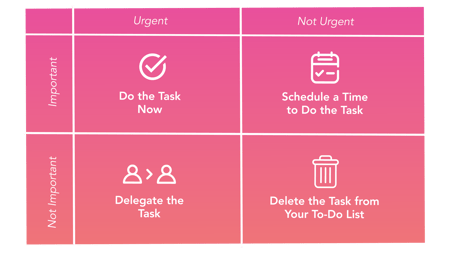6 min read
Time Management Strategies: 5 Tools to Take Back Your Time
How many times have you wished there were more hours in the day to get everything done? Unfortunately, if you feel this way at work, you’re not...
3 min read
 Michelle Bennett
:
Nov 28, 2022 6:00:00 AM
Michelle Bennett
:
Nov 28, 2022 6:00:00 AM
.png)
Poor time management isn’t an isolated issue. It almost always spills over into other areas of an employee’s life on the job. It impacts everything from their ability to meet critical deadlines to the quality of their work, their working relationships, and their perceived level of professionalism. When that happens, what might have begun as a correctable time management issue can escalate into something far more significant.
While every employee is responsible for effectively managing their time at work, you, as their leader, also bear some degree of responsibility. After all, it is your responsibility to ensure every employee does their job and does it well. As such, you need to be able to spot the signs of poor time management and provide your employees with the coaching and tools they need to correct the issue.
To help you do just that, here are five tried-and-true time management techniques that you can teach employees who are struggling with time management in the workplace:

If your employee exclaims that it never feels like there’s enough time in the day to do everything they have to do, get them to try time blocking with this template.
Time blocking is when you break down the day hour by hour and fill out blocks of time with non-negotiable activities such as meetings, breaks, and correspondence (ex., Emails, and phone calls). Once those are inputted, you can clearly see exactly how much time is left in the day for the other things on your to-do list. You then fill in the remaining blocks with those tasks, ideally based on their level of priority.
For employees, this helps them get organized and regain a sense of control over their days. For you as their leader, time blocking allows you to see exactly where your employee's time is being spent and if you need to make changes, such as redistributing tasks to equalize the workload among the team or eliminating redundant tasks.
A huge part of effective time management is the ability to prioritize. Without the ability to differentiate between important and urgent tasks, your employees will spend their time on the wrong things. For example, you might find them sorting their inbox or reformatting a document despite the fact that there is an urgent client request that needs their attention ASAP.

To keep that from happening and to teach them how to prioritize their tasks, introduce them to the Eisenhower Matrix. The idea of this technique is to have your employee sort every item on their to-do list into one of four categories, including:
By categorizing their tasks in this way, they can easily see what they should immediately spend time on and prioritize in their schedule versus what they should not.
Of all the time management techniques, Eat the Frog has one of the most interesting origins. Mark Twain once said, “If it's your job to eat a frog, it's best to do it first thing in the morning. And if it's your job to eat two frogs, it's best to eat the biggest one first.” Essentially, he’s saying that if you have something challenging, important, or unpleasant on your to-do list, you should tackle it first thing in the morning.
Not only is the morning scientifically proven to be the time of day when we work with the most speed and accuracy, but this will challenge procrastinators to stop putting off the big tasks for last.
We are bombarded with distractions all day, every day. While it’s the nature of the ultra-connected digital world we live in, the fact remains that distractions take an average of 23 minutes and 15 seconds to recover from. So, if you pause what you’re doing even just to do something quickly, such as sending a short Slack message, it could take you another 20 minutes afterward to regain your focus and pick up where you left off.
If distractions are slowing down your employees and causing bigger time management issues, then encourage them to practice the Pomodoro Technique when they really need to focus. Here’s how it’s done:
Underestimating how long it will take to do a task is a common time management mistake that can be remedied with a time diary. A time diary is a log of what an employee does, when they do it, and how long it takes them to complete it. Historically, this was done on paper or on a spreadsheet. Today though, there are quite literally thousands of free apps at your fingertips to help you do this, such as Hours TimeLord or Toggl Track.
By getting your employee to keep a time diary for a set period, they will be able to see exactly how long it takes them to do their typical tasks, which in turn, will allow them to make more realistic and accurate plans for their time.
.png)
6 min read
How many times have you wished there were more hours in the day to get everything done? Unfortunately, if you feel this way at work, you’re not...
.png)
5 min read
Over the course of your life, you have picked up habits, abilities, and skills that allow you to succeed in the workplace, regardless of what title...
![Executive Assistant Skills Assessment [2025]](https://www.niagarainstitute.com/hubfs/Executive%20Assistant%20Skills%20%20(1).png)
5 min read
Have you ever asked yourself what exactly makes a great executive assistant (EA)? While there are many ways to answer this question, one thing is...